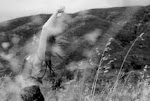Since the birth of cinema, filmmakers have continuously sought ways to delve into the depths of the human psyche, exploring the intricacies of emotions, desires, and unconscious motivations. Amidst this endeavor, the fascinating intersection between psychoanalysis and film has emerged. Sigmund Freud's groundbreaking theories on the human mind and the unconscious have significantly influenced the language of cinema, creating a powerful artistic tool to portray, interpret, and explore the complexities of human behavior. Some film directors like Nolan or Wes Anderson are good at creating stories that fluctuate between reality and dreams while exploring these complexities.
Psychoanalysis, as conceptualized by Freud, revolves around the idea that human behavior is profoundly influenced by unconscious desires, fears, and conflicts. These elements, hidden from conscious awareness, play a significant role in shaping who we are and how we navigate the world. Film, with its ability to depict visual narratives, soundscapes, and symbolism, serves as an ideal medium to externalize these internal psychological struggles.
One of the fundamental aspects of psychoanalysis integrated into film lies in the use of symbolism and metaphor. Through visual and auditory cues, filmmakers can evoke deep emotions and buried memories from the audience, tapping into the collective unconscious shared by all human beings. Carl Jung, a key figure in the psychoanalytic field, expanded on the concept of the collective unconscious, proposing that certain symbols and archetypes are universally understood and resonate with individuals across cultures and time. Filmmakers often harness this power, employing symbols and archetypes to convey meaning beyond the surface of the story.
Dream sequences in films also mirror the dream analysis technique used in psychoanalysis. Dreams, according to Freud, are the "royal road to the unconscious," providing insights into a person's hidden desires and fears. Directors skillfully incorporate dream-like sequences to explore their characters' internal struggles and bring to light the deeper aspects of their personalities.
Moreover, psychoanalysis has had a significant impact on character development in film. By applying Freud's theories on defense mechanisms, such as repression and denial, filmmakers create multifaceted characters who grapple with internal conflicts and emotional turmoil. The audience becomes immersed in the characters' psyches, understanding their struggles, and perhaps even recognizing elements of themselves in the process.
Alfred Hitchcock, often referred to as the "Master of Suspense," brilliantly integrated psychoanalytic concepts into his films. In the classic "Vertigo" (1958), Hitchcock explores themes of obsession, loss, and identity. The protagonist, Scottie, wrestles with repressed desires and unresolved trauma, ultimately leading to a psychological unraveling. Through visual storytelling and carefully crafted suspense, the film reflects Freud's theories on the unconscious and the complexities of the human mind.
Psychoanalysis in film extends beyond individual characters and can be applied to the narrative structure itself. Non-linear storytelling, fragmented narratives, and unreliable narrators are techniques frequently employed to mirror the dissonance found in the human psyche. Such techniques challenge the audience to actively engage with the film, unraveling the layers of meaning embedded within the story.
While psychoanalysis has played a significant role in shaping film, it is essential to acknowledge that films are not meant to be therapeutic interventions. Instead, they serve as mirrors that reflect and amplify our shared human experiences. The emotional resonance and psychological depth offered by the marriage of psychoanalysis and film create a unique and impactful cinematic experience.
In conclusion, the relationship between psychoanalysis and film has given birth to a rich tapestry of artistic expression. As filmmakers continue to draw upon the insights of psychoanalytic theories, they offer audiences a window into the human psyche, enabling us to explore the depths of our emotions, fears, and desires. This convergence of art and science opens new avenues for introspection and empathy, reminding us of the profound power of storytelling and its ability to uncover the enigmatic nature of the human mind on the silver screen.


